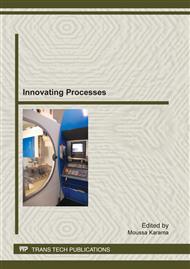p.116
p.128
p.143
p.154
p.166
p.177
p.187
p.200
p.210
Experimental and Mechanical Characterizations of a Lead Free Solder Alloy for Electronic Devices
Abstract:
Electronic power modules devices are paramount components in the aeronautical, automotive and military applications. The solder layers are the most critical parts of the module and are usually subjected in their whole life to complex loading conditions. To improve the design task, realistic thermoelastoviscoplastic and lifetime prediction models which can describe efficiently the deformation-damage of the electrical device must be chosen carefully. Some of the most common behavior models are based on the separation between creep and plasticity deformations such as power law, Garofalo, Darveaux… So, to take into account the creep-plasticity interaction, the thermal cycling as well as the hardening-softening effects, unified viscoplastic models are increasingly being used to describe more efficiently the physical state of the material. We propose in this framework a survey of some unified viscoplastic models used in the electronic applications for the viscoplastic modeling of the solder as well as creep-fatigue life prediction rules. The models are used for the characterization of a SnAgCu solder and are briefly compared within tensile, creep data and stabilized responses.
Info:
Periodical:
Pages:
210-217
Citation:
Online since:
December 2011
Authors:
Price:
Сopyright:
© 2012 Trans Tech Publications Ltd. All Rights Reserved
Share:
Citation:


